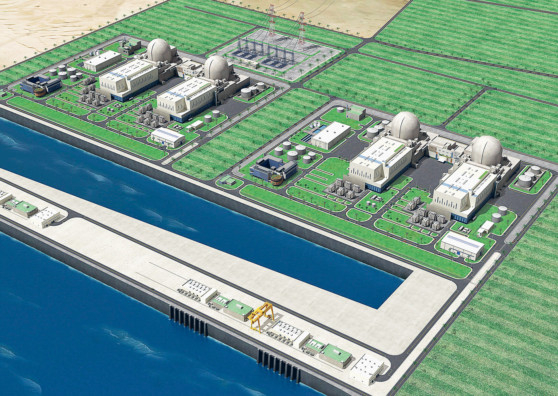
Oil-rich Abu Dhabi is serious about becoming a green emirate and diversifying its energy production away from natural gas, which is currently almost the sole source of electricity generation. “If this situation continues, in light of the strong economic expansion in the emirate, demand for natural gas to generate power will double by 2020,” says Dr Sultan Ahmad Al Jaber, CEO of Masdar — Abu Dhabi Future Energy Company.
Abu Dhabi has laid out a plan to increase the share of renewable energy — a total of 23 gigawatts in power generation capacity per year — in its electricity mix to 7 per cent and nuclear energy’s share to 25 per cent by 2020. This is stated in Abu Dhabi Economic Vision 2030, a roadmap for transforming the emirate into a sustainable and diversified high value-added knowledge economy by 2030.
Renewable energy development in Abu Dhabi revolves around Masdar, a planned green city with projects and developments that include photovoltaic and solar thermal energy, wind power, hydrogen, as well as carbon capture and storage. One of the largest initiatives to date has been the establishment of a 100-megawatt solar thermal power generation plant, Shams 1, at an investment of $600 million (around Dh2.2 billion), which started operation in March last year in Madinat Zayed, 120 kilometres south-west of the city. The plant is designed to cover the electricity demand for 20,000 ordinary homes. Another solar power plant, Noor 1, is under construction, and the Noor 2 and 3 facilities are being considered for the future. The Shams plant uses concentrated photovoltaics (CSP), which are slightly more expensive than conventional photovoltaic, but have a far higher capacity.
“CSP technology has a storage capability that allows the plant to run around the clock,” says Bader Al Lamki, Director, Masdar Clean Energy.
He also points out carbon capture projects, which involve the process of capturing waste carbon dioxide from large sources — in Masdar’s case from aluminium and other plants — for injection into the ground, where it does not enter the atmosphere. The Abu Dhabi National Oil Company is currently working on a budget.
Another big environmental initiative comes from the Abu Dhabi National Energy Company, or Taqa, one of Abu Dhabi’s flagship companies fully embedded in the emirate’s strategy to enhance economic diversification. Taqa, primarily engaged in power generation, water desalination, as well as production and storage of oil and gas, is currently implementing a waste-to-energy plant project at a total cost of $850 million. The project aims to generate 100 megawatts in power from one million tonnes of collected solid waste annually, a sizeable part of the 30,000 tonnes of waste generated in the emirate per day.
“It is the UAE’s first waste-to-energy project [and] should also help achieve the aim of diverting 80 per cent of the supplies for Abu Dhabi’s ever-growing landfills,” says Edward Atkinson, Head of Waste-To-Energy, Taqa.
He adds that if the project is fast-tracked in the planning and permission stage, the plant could be operational by 2017 and save 1.64 million tonnes of carbon dioxide per year — roughly, the equivalent of the average volume of carbon dioxide that 800,000 cars produce annually.
Abu Dhabi could also save 181 million cubic metres of natural gas for power production per year, and the speed of landfill use could be slowed. Most of the waste in Abu Dhabi is organic, Atkinson points out, but there is also a large volume of plastic, wood, paper, textiles, metals and glass, thus the plant needs to have a wide operating capacity.
While Masdar and Taqa are implementing the renewable energy concept part of Abu Dhabi’s vision for the future, the main alternative to power generation from natural gas will be nuclear power.
In 2009, a South Korean consortium that includes the Korea Electric Power Corporation made a successful $20.4-billion bid to construct two nuclear reactors in Barakah, the first of a total of four. The nuclear power roadmap calls for the completion of four nuclear reactors with a total power generation capacity of 5.6 gigawatts by 2020. The run-up for the first plant, Barakah 1, is scheduled for May 2017. Construction of the second nuclear reactor, Barakah 2, started in May last year, and the plant should go online in 2018.
— Special to GN Focus








